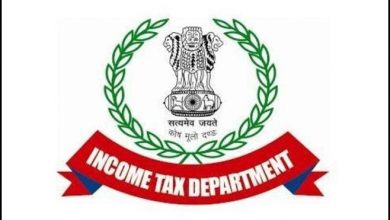Statement by Shri K N Vyas, Chairman, Atomic Energy Commission at 63rd General Conference of IAEA
New Delhi: The 63rd General Conference of the International Atomic Energy Agency (IAEA) is presently going on at Vienna (September 16 -20, 2019). Following is the statement made today (18-09-2019) by Dr. K N Vyas, Chairman, Atomic Energy Commission and Secretary, Department of Atomic Energy, Government of India and Head of the Indian delegation to the conference:
“I take this opportunity to convey on behalf of the people of India and the Government of India the warmest greetings to the International Atomic Energy Agency and the Member States on the occasion of the 63rd General Conference.
I also join my other colleagues to express our deep condolences on the sad demise of DG Amano in July this year. His contribution to IAEA is well known. We in India very fondly remember his visits to our country and his helpful nature. During his tenure, we brought 12 facilities under IAEA safeguards and signed the Additional Protocol to the India-IAEA Agreement for the Applications of Safeguards to Civil Nuclear Facilities. DG Amano’s contribution will be remembered forever, especially his vision of “Atoms for Peace and Development” which has global relevance. India whole heartedly supports designating The Flexible Modular Laboratory at Seibersdorf as Yukia Amano Laboratories.
Let me congratulate you Madam President on your election as the President of the 63rd General Conference. I am sure that under your able leadership the current General Conference will accomplish all the tasks laid before it successfully.
As in the previous years, during this year too, India’s interaction with IAEA has remained significant. I am happy to share that the 27th IAEA Fusion Energy Conference (FEC-2018), a forum for discussions on key physics and technology issues was held at Gandhinagar, Gujarat, in October 2018. This saw great success as more than 700 experts from 39 countries participated in the Conference. 131 oral & 641 poster presentations and showcasing of products enriched the Conference.
Out of 19 programmes organized at the Global Centre for Nuclear Energy Partnership in India in 2018-19, eight were conducted jointly with the IAEA, thus reinforcing India’s collaboration with IAEA in capacity building.
I am very pleased to share with you that India’s Kaiga Generating Station (KGS-1) has set a new world record of continuous operation for 962 days on 31 December 2018 while working at 99.3% plant load factor.
Tarapur Atomic Power Station Units (TAPS 1 &2), connected to grid in April and May 1969, have completed 50 years of safe operation. These are currently the oldest operating power reactors in the world, producing nuclear power at less than 3 cents per unit. Such achievements demonstrate India’s ability to design, build and reliably operate PHWRs & LWRs.
India has plan for capacity addition in nuclear power generation and presently we have 21 reactors under the stage of construction and planning. This will help in achieving an additional capacity of about 15,000 MWe.
Nuclear Fuel Complex (NFC), a unit under DAE, has completed the supply of fuel bundles to KAPS-3, the first 700 MWe PHWR, towards initial core requirement.
Apsara-U, an upgraded swimming pool type reactor, operational since September 2018, has been operated at 90% of rated power and demonstrated that it can produce carrier free Cu-64 radioisotope, which has potential for usage in PET scans.
The U-233 fuelled Kalpakkam Mini Reactor (KAMINI) has continued its successful operation. It is being used for neutron radiography of a large number of pyro-devices from the Indian Space Research Organization, activation analysis, neutron detector testing, etc.
Tata Memorial Centre (TMC), a unit under DAE, today has seven hospitals and one research institute catering to the needs of more than half a million patients every year, among which, ~100,000 are new patients.
I am very happy to share with you that yesterday we have launched a global cancer care network, “NCG-Vishwam Cancer Care Connect” (NCG-Vishwam 3C) during our side event. NCG-Vishwam envisages integration of the hospitals and relevant cancer care institutes in partner countries with the National Cancer Grid (NCG) of India. NCG managed by Tata Memorial Centre (TMC), was established in 2012 with the vision of creating uniform standards of cancer care across India and this has grown to a large network of 183 cancer centres, and hospitals.
We hope that NCG-Vishwam 3C will bring a paradigm shift in cancer care in the form of sharing guidelines for management of common cancer, giving second opinion, deciding on treatment, sharing online resources, etc.
India has made huge progress in utilisation of radiation technologies for societal uses. We are willing to share our knowledge and expertise with our friendly partners. The process has already set in through increased interactions and actual collaborations in all areas of nuclear technologies concerning human life, be it power, health, agriculture or human capital development. We are determined to take this collaboration to a higher level.
We also acknowledge the dynamic role played by the IAEA in guiding peaceful uses of nuclear energy, ensuring safety and security, and look forward to the Agency’s continued and vital support for providing a conducive atmosphere for the growth of nuclear science and technology.
I conclude by thanking Government of Austria and its people for hosting the IAEA and the General Conference and wish the 63rd Conference a grand success.”




